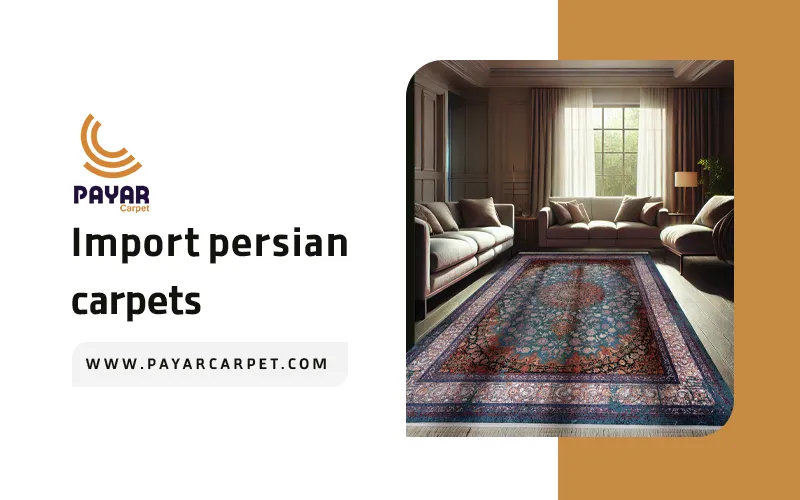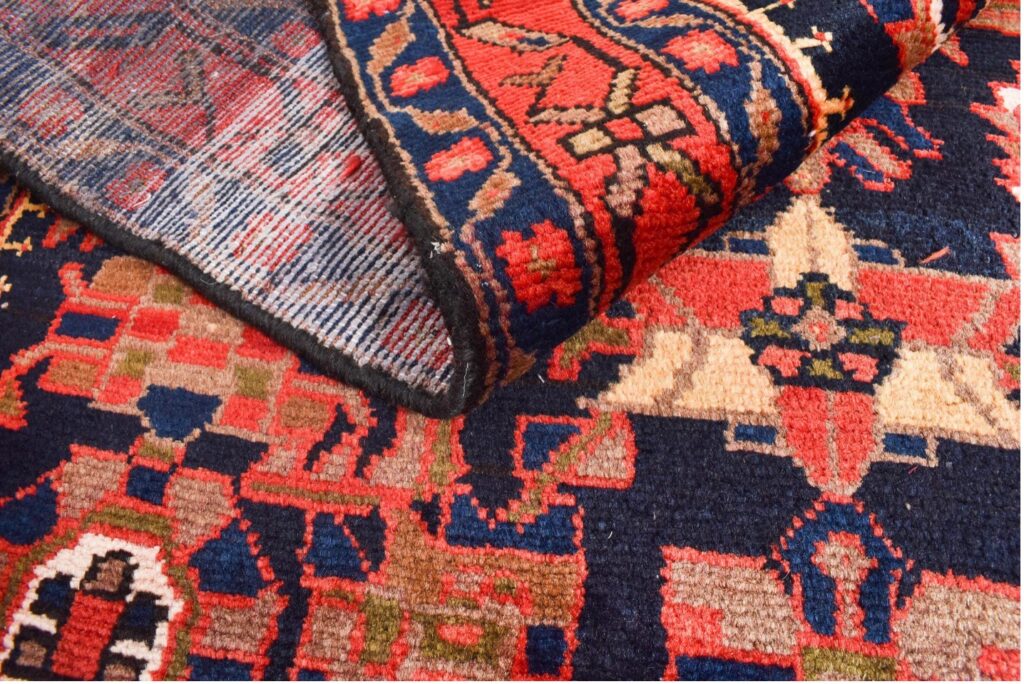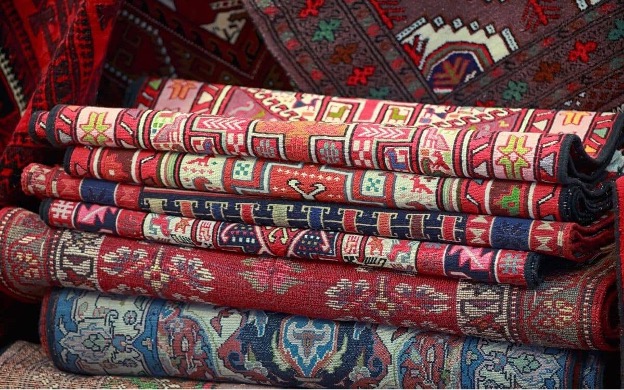Importing Persian Carpets: A Timeless Investment in Art and Craftsmanship
Persian carpets, renowned for their intricate designs, rich colors, and exceptional quality, have been cherished for centuries. Importing these exquisite textiles involves a journey through history, culture, and craftsmanship, offering aesthetic pleasure and a valuable investment. Here’s a closer look at what goes into importing Persian carpets and why they remain a treasured choice for collectors and interior designers alike.
Understanding Persian Carpets
Persian carpets, or Iranian rugs, are woven primarily in Iran, a region known for its deep-rooted tradition in rug-making. Each rug is a testament to the weaver’s skill and often reflects the cultural and artistic heritage of its area of origin. Patterns can range from intricate floral designs to geometric motifs, with colors derived from natural dyes.
The Import Process
Research and Selection: The first step in importing Persian carpets involves thorough research. Buyers must identify reputable suppliers and dealers in Iran who offer authentic carpets. Visiting trade shows, auctions, or working with established importers can ensure you purchase genuine pieces.
Understanding Authenticity: Authentication is crucial. Persian carpets are classified based on origin, design, and knot density. Familiarizing yourself with terms like “Kilim,” “Heriz,” or “Isfahan” can help you select the right piece. Each region’s rugs have unique characteristics, such as the knotting technique and wool quality.
Legal and Customs Requirements: Importing carpets requires navigating various regulations. Ensure you understand the customs duties, import restrictions, and any required documentation. This may include certificates of authenticity and compliance with international trade laws.
Shipping and Handling: Proper handling during shipping is essential to prevent damage. Carpets should be carefully packed and shipped through reliable carriers.
The Appeal of Persian Carpets
Artistic Value: Persian carpets are often considered works of art. Their designs can transform a room, adding warmth and sophistication. Many carpets are hand-knotted using techniques passed down through generations, making each piece unique.
Durability and Longevity: High-quality Persian carpets, particularly wool or silk ones, are incredibly durable. Their resilience makes them not just decorative pieces but functional investments.
Cultural Significance: Owning a Persian carpet is about aesthetics and embracing a piece of cultural heritage. These carpets often carry stories and symbols that reflect the rich history of their region of origin.
Caring for Persian Carpets
Maintaining the beauty and value of Persian carpets involves regular care. This includes vacuuming to remove dust, rotating the rug to ensure even wear, and addressing spills or stains promptly. Professional cleaning and restoration services can help preserve the carpet’s condition over time.
Conclusion
Importing Persian carpets is more than a commercial transaction; it’s a venture into a world of artistry and tradition. By understanding the process and appreciating the craftsmanship, you bring a stunning piece into your home and participate in preserving an ancient craft. Whether you’re a collector, an interior designer, or simply an admirer of beautiful textiles, Persian carpets offer a unique blend of beauty, heritage, and enduring value.
Origins and Early History
Ancient Beginnings: The tradition of carpet weaving in Persia dates back to ancient times. The earliest known carpet is the Pazyryk Carpet, discovered in a Scythian tomb in the Altai Mountains of Siberia around 500 BC. This carpet is thought to have been made in Persia or the surrounding regions.
Medieval Period: By the 7th century AD, Persian carpet weaving had become a well-developed craft. The art form flourished under the Sassanian Empire (224-651 AD) and continued to evolve during the Islamic Golden Age.
Islamic Influence and Growth
Safavid Dynasty (1501-1736): The Safavid period is considered the golden age of Persian carpet weaving. Under the Safavids, Persian carpets reached new heights in terms of artistry and complexity. Workshops were established in major cities like Isfahan, Kashan, and Tabriz, where highly skilled artisans created intricate designs and used luxurious materials.
Design and Techniques: Persian carpets from this period are renowned for their intricate patterns, including floral motifs, medallions, and geometric designs. Techniques such as knotting, dyeing with natural colors, and weaving on horizontal looms were perfected during this era.
Modern Era and Global Influence
Qajar Dynasty (1789-1925): The Qajar period saw a continuation of traditional designs but also introduced new elements and styles. Persian carpets from this era often featured more vibrant colors and sometimes incorporated Western motifs.
Contemporary Developments: In the 20th century, Persian carpets began to gain international recognition and became highly sought after in global markets. Modern Persian carpets continue using traditional techniques with updated designs and adaptations to contemporary tastes.
Cultural Significance
Symbolism: Persian carpets often hold symbolic meanings. Designs and motifs can represent various aspects of Persian culture, such as nature, spirituality, and social status.
Craftsmanship: Making a Persian carpet is a labor-intensive process involving spinning, dyeing, and weaving. A single piece often takes several months or even years to complete. Each carpet is unique, reflecting the skill and creativity of its maker.
Legacy
Collectibles and Art: Persian carpets are highly valued as art pieces and collectibles. They are celebrated for their beauty, craftsmanship, and historical significance.
Global Influence: Persian carpet weaving techniques and designs have influenced carpet-making traditions worldwide. They continue to be admired and sought after in historical and modern contexts.
Persian carpets are not just floor coverings; they reflect a rich cultural tradition and artistic heritage that continues to captivate people worldwide.
Importing Persian carpets
Importing Persian carpets involves several key steps, from finding a reputable supplier to handling logistics and ensuring compliance with regulations. Here’s a comprehensive guide to help you navigate the process:
Research and Selection
Identify Your Needs:
Determine the type, size, style, and quality of Persian carpet you want. Persian rugs come in various designs and materials, so clarifying your preferences will help you narrow down your choices.
Find Reputable Suppliers:
Look for well-established carpet dealers or manufacturers in Iran or international trade shows. Reputable suppliers often have a history of quality products and positive customer reviews.
Online platforms like Alibaba or specialized carpet dealers can also help find suppliers.
Verify Authenticity:
Ensure the carpets are genuine Persian (Iranian) carpets. Authentic Persian rugs are typically made in Iran and feature high-quality craftsmanship.
Purchase and Negotiation
Request Samples and Photos:
Ask for detailed photos and samples of the carpets to assess their quality and craftsmanship before purchasing.
Negotiate Terms:
Discuss pricing, payment terms, and other conditions like return policies. Negotiating with suppliers can sometimes lead to better terms or discounts.
Check Certification:
Ensure that the supplier provides any necessary certification or documentation proving the authenticity and origin of the carpets.
Logistics and Shipping
Understand Import Regulations:
Research the import regulations and tariffs for carpets in your country. This includes any restrictions or special requirements for importing textiles.
Arrange Shipping:
Decide whether to handle shipping yourself or use a freight forwarder. A freight forwarder can manage the shipping process, including transportation, customs clearance, and delivery.
Packaging:
Ensure the carpets are packed securely to avoid damage during transit. Professional carpet dealers typically handle this, but it’s good to confirm.
Insurance:
Consider insuring your shipment to protect against loss or damage during transit.
Customs and Duties
Prepare Documentation:
Gather all necessary documents for customs clearance, including the invoice, packing list, certificate of origin, and any other required paperwork.
Pay Duties and Taxes:
Be prepared to pay import duties, taxes, and any other fees required by your country’s customs authorities. The amount will depend on the value and type of carpet.
Receiving and Inspection
Inspect the Carpets:
Upon arrival, carefully inspect the carpets to match the descriptions and meet your quality expectations. Report any discrepancies or issues to the supplier immediately.
Handling and Storage:
Store the carpets in a suitable environment to prevent damage. Persian carpets should be kept in a dry, clean place, away from direct sunlight and moisture.
Selling or Displaying
Marketing:
If you’re importing carpets for resale, develop a marketing strategy to reach potential customers. In your promotional materials, highlight the unique qualities and craftsmanship of Persian carpets.
Pricing:
Set competitive pricing based on your costs, market demand, and the value of the carpets.
By following these steps, you can successfully import Persian carpets and enjoy their beauty and craftsmanship while navigating the complexities of international trade.
About Payar Company
Reputation and Experience:
Payar Company has established itself as a reputable exporter of Persian carpets with a focus on quality and authenticity. Their experience in the industry has helped them build strong relationships with customers and suppliers.
Product Range:
They offer a wide range of Persian carpets, including traditional designs, modern adaptations, and custom orders. Their selection often features carpets from renowned weaving centers like Isfahan, Kashan, and Tabriz.
Quality Assurance:
Payar Company emphasizes the use of high-quality materials and traditional weaving techniques, which ensures that its carpets are not only aesthetically pleasing but also durable and long-lasting.
Authenticity and Craftsmanship:
The company takes pride in offering authentic Persian carpets, which showcase the intricate designs and craftsmanship known for Persian carpets. Each piece often reflects Iran’s rich cultural heritage.
Customer Service:
Payar Company is known for its customer-focused approach. It offers assistance throughout the purchasing process, from selecting carpets to arranging shipping and handling any post-purchase queries.
International Reach:
Payar Company serves a global market as an exporter, making Persian carpets accessible to customers worldwide. They manage the complexities of international trade, including logistics, customs, and regulatory compliance.
How to Engage with Payar Company
If you’re interested in purchasing carpets from Payar Company, here are some steps you might take:
Visit Their Website:
Check their official website for product catalogs, contact information, and additional details about their offerings.
Contact Them Directly:
You can contact Payar Company via email or phone to inquire about specific carpets, request samples, or get quotes. They can provide detailed information and assist with any custom requirements.
Attend Trade Shows:
If possible, attend trade shows or exhibitions where Payar Company showcases its carpets. This provides an opportunity to see its products in person and discuss your needs with its representatives.
Request References:
Ask for references or testimonials from other customers who have purchased from Payar Company to gain insights into their reliability and service quality.
Review Terms:
Before finalizing any purchase, review the terms and conditions related to pricing, shipping, payment, and returns.
Payar Company‘s reputation as a leading exporter of Persian carpets can ensure high-quality products and reliable service.





